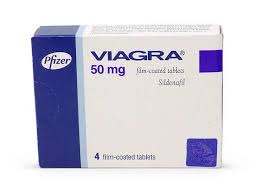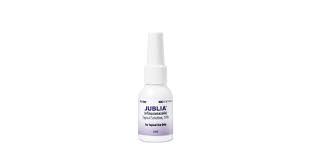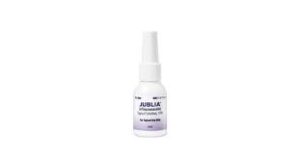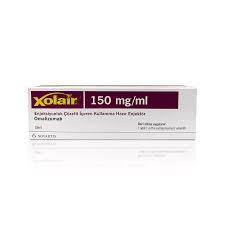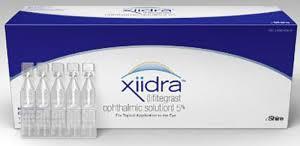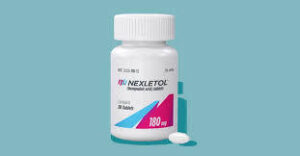Vasopressin

Here is a more elaborate and sophisticated examination of Vasopressin, delving into its molecular biology, receptor interactions, systemic effects, clinical relevance, and contemporary research pursuits.

Molecular Biology of Vasopressin
Gene: The precursor of vasopressin is encoded by the AVP gene located on chromosome 20p13.
Synthesis:
Synthesized as a preprohormone within the hypothalamus, specifically in the paraventricular and supraoptic nuclei.
It undergoes cleavage into its active form during its transit to the posterior pituitary.
Structure:
Comprising a 9-amino acid cyclic peptide, it features a disulfide bridge between Cys1 and Cys6, which serves to stabilize its cyclic configuration.
Vasopressin Receptors and Signal Transduction
V1a Receptors (Vascular)
Location: Found in smooth muscle cells, liver, and platelets.
Pathway: Engages Gq-protein coupled mechanisms → Activates phospholipase C (PLC) → Elevates intracellular levels of IP3 and DAG → Increases Ca2+ concentrations → Induces vasoconstriction.
Functions:
Facilitates systemic vasoconstriction to elevate blood pressure.
Promotes glycogenolysis in hepatocytes.
V1b Receptors (CNS and Pituitary)
Location: Anterior pituitary and central nervous system regions.
Pathway: Coupled with Gq-proteins.
Functions:
– Induces the secretion of ACTH from the anterior pituitary in response to stressors.
– May play a role in modulating mood, aggression, and responses to stress.
V2 Receptors (Renal Tubules)
Location: Found within the collecting ducts of the kidneys.
Pathway: Coupled with Gs-proteins → Activates adenylate cyclase → Elevates cAMP levels → Activates protein kinase A (PKA) → Facilitates the insertion of aquaporin-2 channels.
Functions:
– Enhances water reabsorption, thereby concentrating urine.
– Regulates plasma osmolarity and maintains blood volume.
Regulation of Vasopressin Secretion
Osmotic Regulation
Monitored by osmoreceptors in the hypothalamus.
Triggered when plasma osmolarity exceeds 280 mOsm/kg.
Low osmolarity results in the inhibition of secretion.
Non-Osmotic Regulation
Hemodynamic Signals:
Baroreceptors located in the carotid sinus and aortic arch detect low blood pressure.
Hypovolemia prompts the release of vasopressin.
Stress Hormones:
Corticotropin-releasing hormone (CRH) works in concert with vasopressin to stimulate ACTH release.
Suppression by Other Factors
Alcohol: Acts to inhibit vasopressin secretion, leading to increased diuresis.
Atrial Natriuretic Peptide (ANP): Secreted by the heart during states of volume overload, it serves to inhibit vasopressin release.
Comprehensive Clinical Applications
Shock and Vascular Dilation Disorders
Septic Shock: Employed to restore vascular integrity when catecholamines prove inadequate.
Hemorrhagic Shock: Aids in the stabilization of blood pressure during critical episodes.
Diabetes Insipidus (DI)
Central DI: The administration of vasopressin rectifies the deficiency of the natural hormone.
Nephrogenic DI: Vasopressin is ineffective; alternative therapies are necessary (such as thiazides and NSAIDs).
Cardiac Arrest
Mechanism: Enhances coronary and cerebral blood flow through vasoconstriction.
Dosage in Advanced Cardiac Life Support (ACLS): A singular intravenous dose of 40 units, substituting one dose of epinephrine.
Hemorrhage Management
Esophageal Varices:
Reduces portal vein pressure through splanchnic vasoconstriction.
Typically paired with nitroglycerin to mitigate systemic adverse effects.
Surgical Hemorrhage: Occasionally utilized as a hemostatic agent.
Pharmacokinetics and Dosing
Routes of Administration:
Intravenous (IV): Immediate effect with a brief duration.
Intramuscular (IM): Gradual onset (approximately 15–30 minutes).
Intranasal: Primarily indicated for central DI.
Half-Life: Approximately 10–20 minutes.
Clearance: Rapidly metabolized in the liver and kidneys by vasopressinase enzymes.
Comprehensive Examination of Side Effects
Hyponatremia
The phenomenon of excessive water reabsorption results in dilutional hyponatremia.
Symptoms may include confusion, seizures, and in severe instances, coma.
Cardiovascular Implications
Bradycardia occurs as a reflexive response to vasoconstriction.
Myocardial ischemia can arise from pronounced coronary vasoconstriction.
Gastrointestinal Reactions
Nausea and vomiting are likely induced by splanchnic vasoconstriction.
Vasopressin Analogues
Desmopressin (DDAVP)
A selective V2 receptor agonist exhibiting minimal V1 activity.
Applications include:
– Central diabetes insipidus.
– Nocturnal enuresis.
– von Willebrand disease (promotes the release of factor VIII).
Terlipressin
This prodrug converts into lysine-vasopressin.
It is particularly favored for:
– Acute variceal hemorrhage.
– Hepatorenal syndrome.
Elevated Medical Applications
Endocrinology
Explored in the context of adrenal insufficiency and hypothalamic disorders.
Psychiatry
Investigated for its influence on autism spectrum disorders and mood stabilization.
Central administration may enhance social behaviors in animal studies.
Neurotrauma
Current trials are assessing the efficacy of vasopressin in managing cerebral perfusion following traumatic brain injuries.
Research and Innovative Advancements
Non-peptide Vasopressin Agonists: The pursuit of oral formulations that replicate the physiological effects of vasopressin.
Selective Antagonists: Targeting conditions such as SIADH with agents like tolvaptan, a V2 receptor antagonist.
Gene Therapy: Investigating the modulation of the AVP gene in disorders of the hypothalamus.
Special Considerations
Pregnancy and Lactation
Cautious application due to the risk of inducing uterine contractions through off-target activation of oxytocin receptors. Minimal transfer into breast milk.
Monitoring Parameters
Serum sodium levels to evaluate the risk of hyponatremia.
Blood pressure and heart rate to monitor vasoconstriction effects.
Urine output and osmolality for managing diabetes insipidus treatment.
Summary Table: Comprehensive Overview
Feature Details
Receptors V1a (vascular), V1b (pituitary), V2 (renal).
Primary Roles Osmoregulation, blood pressure management, ACTH secretion.
Synthetic Analogues Desmopressin (selective for V2), Terlipressin (extended duration).
Key Clinical Uses Diabetes insipidus, shock, cardiac arrest, variceal hemorrhage.
Pharmacology Characterized by rapid onset, metabolized by vasopressinase, and renal clearance.
Side Effects Hyponatremia, ischemia, nausea, bradycardia.
Future Research Exploring roles in central nervous system disorders, development of non-peptide agonists, and advancements in gene therapy.

